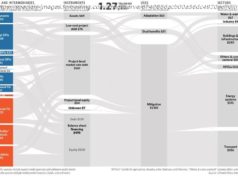Financial markets depend on yield curve „carry“ to function. The current deep inversion of the yield curve is beginning to break things and the failure of Silicon Valley Bank is just another symptom of too much leverage in the wrong places.
Whenever the yield curve inverts as much as it has inverted recent days, things break. First crypto, then the UK financial system (and prime minister), and now a large regional bank with outsized influence. The dominoes seem to be falling on cue and there is probably more to come.
Beyond all the statistical “proofs” to the contrary, there is a reason for why finance does not work in a world of negative carry which results when yield curves are inverted and where there is no incentive to lend long by borrowing short. Just as in physics where one can concoct all kinds of experiments to demonstrate the failure of gravity, it still makes more sense to heed gravity than to bet on it not having its way.
Financial markets depend on yield curve “carry” to function: this is one important thing I learnt working with Bill Gross at PIMCO for many years. An inverted yield curve sucks the air out of the markets, and starts to expose who is running a lot of naked leverage. An inverted curve is literally sand in the gears of the engine of the modern financial system. And today there is more sand in the machine, thanks to the Fed, than any other time in the last forty-plus years.
Banks depend on yield curve “arbitrage” for most of their profits. Unless one has been keeping their money under a mattress for the last three years, it is obvious that banks have been enjoying the benefit of not paying much on their deposits. They basically took all the money the Fed printed, and all the money the Federal government sent via helicopter checks to the public, and deposited the windfall into Treasurys and other Fed-created interest-bearing accounts. For some banks, this led to massive risk-free profits indeed. The natural reaction was: If you could borrow from the depositing public at essentially 0%, and earn say 3% or more at the Fed even in short-term assets, why wouldn’t you do it in a levered manner and amplify the returns, albeit at higher mark to market risk (but no hold to maturity risk)?
The problem is that you can fool some of the people some of the time, but not all of the people all of the time. As I have written before (see here and here), the public has gotten wise and started to move money out of low-yielding deposits. I have been telling my friends that I buy Treasurys Direct (see here) because I don’t have to pay a broker or a bank anything for getting essentially the same yield I would get on a bank CD.






